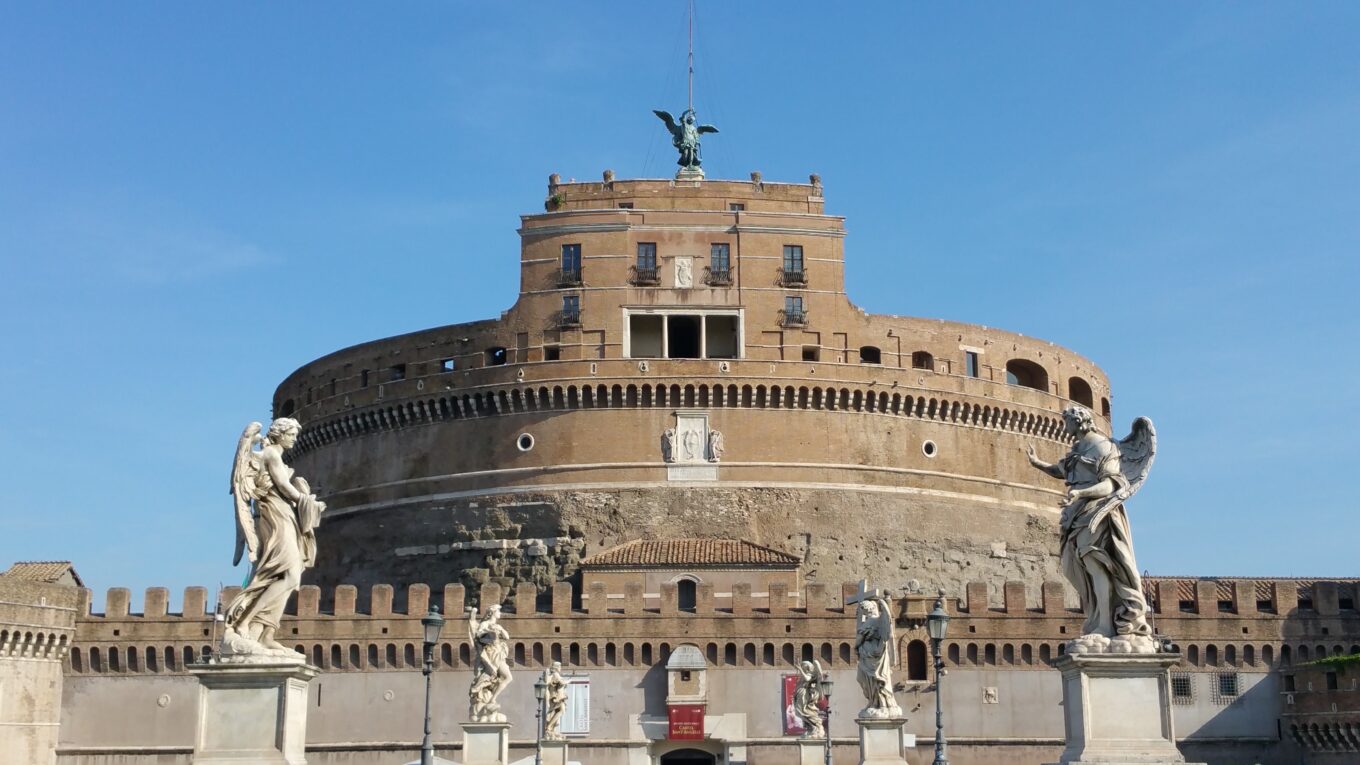Top 20 Ancient Roman Aqueducts
The Ancient Romans dominated the Mediterranean during their historic rise from a small city-state on the Italian Peninsula to a great power that controlled an area from England all the way to Egypt and Mesopotamia. The Romans had a dominant military, a powerful political structure, and most importantly, they had the best engineering skills in the ancient world. One of the greatest engineering achievements of the Romans was the aqueduct, a water management system that allowed Roman cities and populations to flourish.
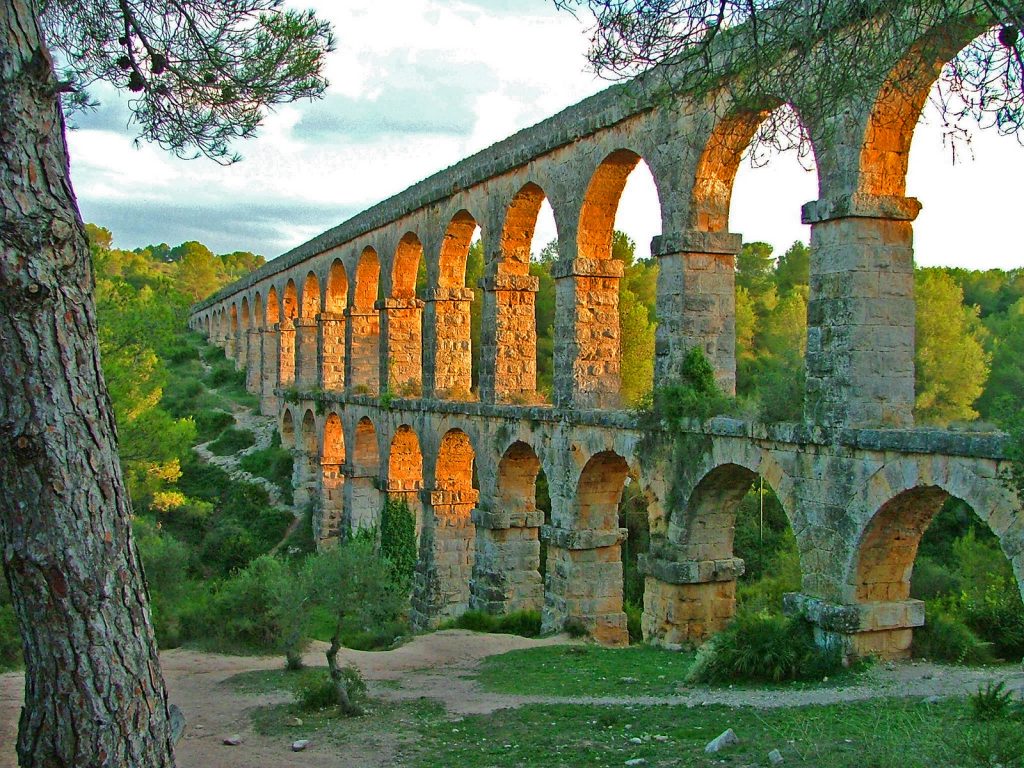
Photo by Roberto Al from flickr
Who were the Romans and why did they build Aqueducts?
At its peak, the Ancient Roman Empire spread from the British Isles in the northwest all the way to modern-day Egypt and Iraq in the southeast. Rome rose to power starting in 509 BCE and eventually fell in 476 CE. The Roman people had an unquenchable thirst for fresh water. Roman bathhouses, latrines, and public fountains all required an immense amount of water every single day. Without aqueducts, none of these luxuries would have been possible. With the first aqueduct completed in 312 BCE, the Romans expanded and improved on their designs over time and created the many examples of Ancient Roman Aqueducts that we see today.
How does an Aqueduct Work?
The concept behind an aqueduct is extremely simple: because water will always flow downhill, by making a channel at a gradual decline, the Romans were able to move water across great distances.
The challenge comes when you have to make a consistently declining aqueduct over inconsistent terrain. So, Roman engineers designed a system of tunnels whenever the aqueducts reached steep hills, and when the land dipped into valleys, the Romans elevated the channels on top of arches. The elevated portions are the more famous and picturesque portions of Ancient Roman Aqueducts, although they made up only a portion of the overall construction.
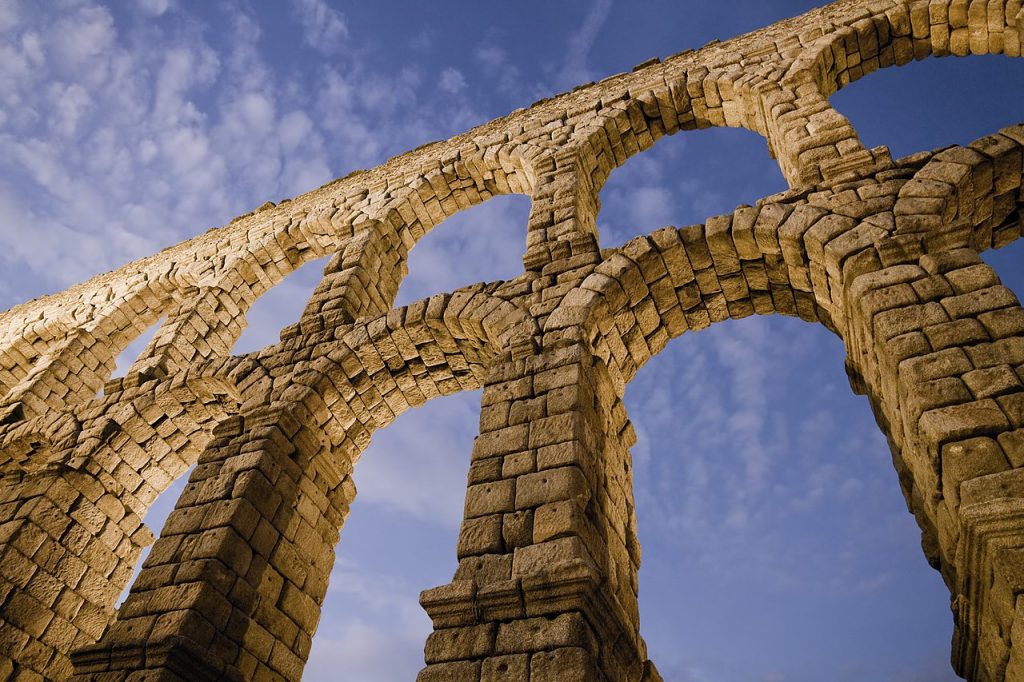
Photo by David Corral Gadea from Wikimedia Commons.
Eventually, the aqueducts emptied into large holding tanks. These tanks would then spread the water all throughout the city through a system of pipes. The layout of the pipes ensured that essential services like drinking water would have priority over things like fountains and public baths.
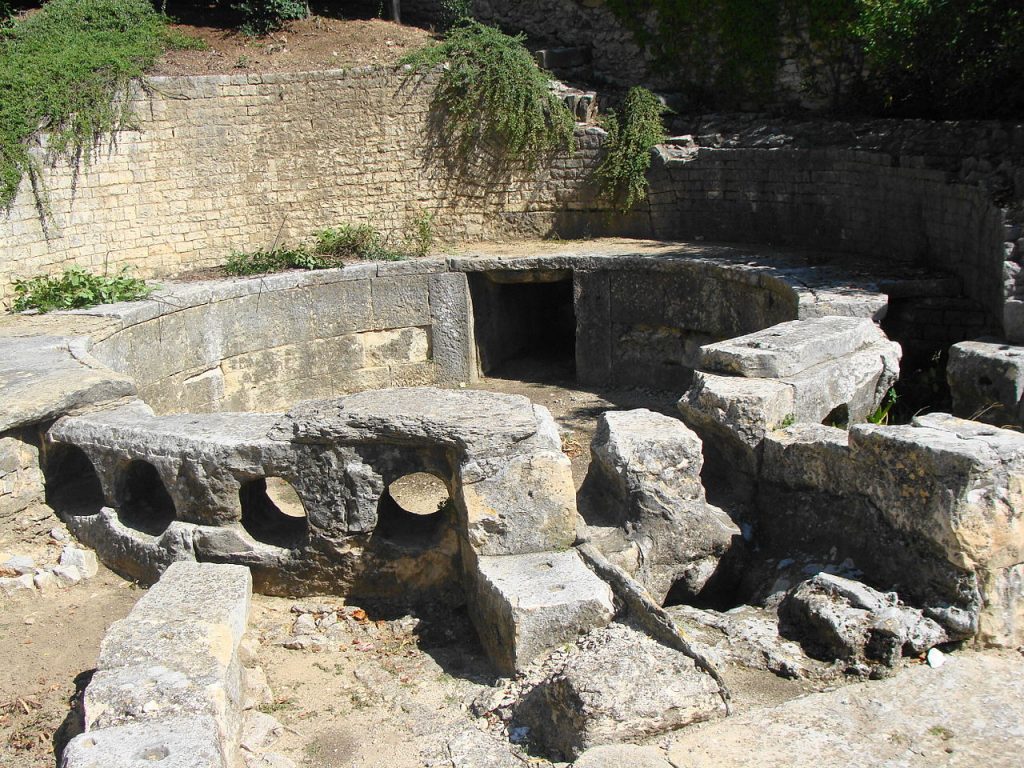
Photo by Przemyslaw Sakrajda from Wikimedia Commons
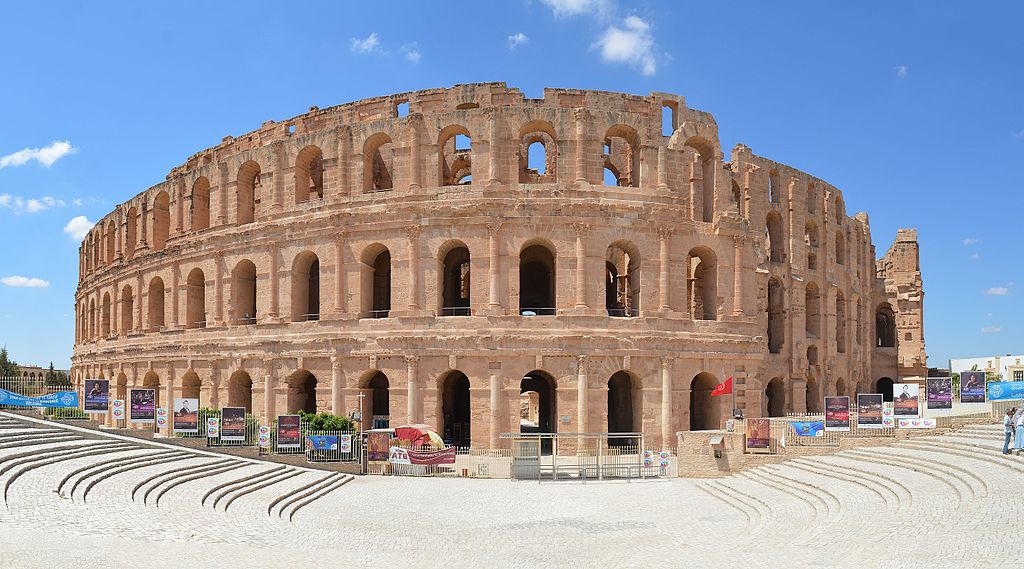
Read our article, “Top 20 Roman Amphitheaters” to learn more about the architecture of the Ancient Romans!
What are the best aqueducts the Ancient Romans ever built?
1. Pont Du Gard – Vers-Pont-Du-Gard, Gard, France

The Pont Du Gard holds the record of being the tallest aqueduct the Ancient Romans ever constructed. The aqueduct carried water over 30 miles (50 km) to the city now known as Nîmes. The arches at the lowest portion are some of the largest the Romans ever built.
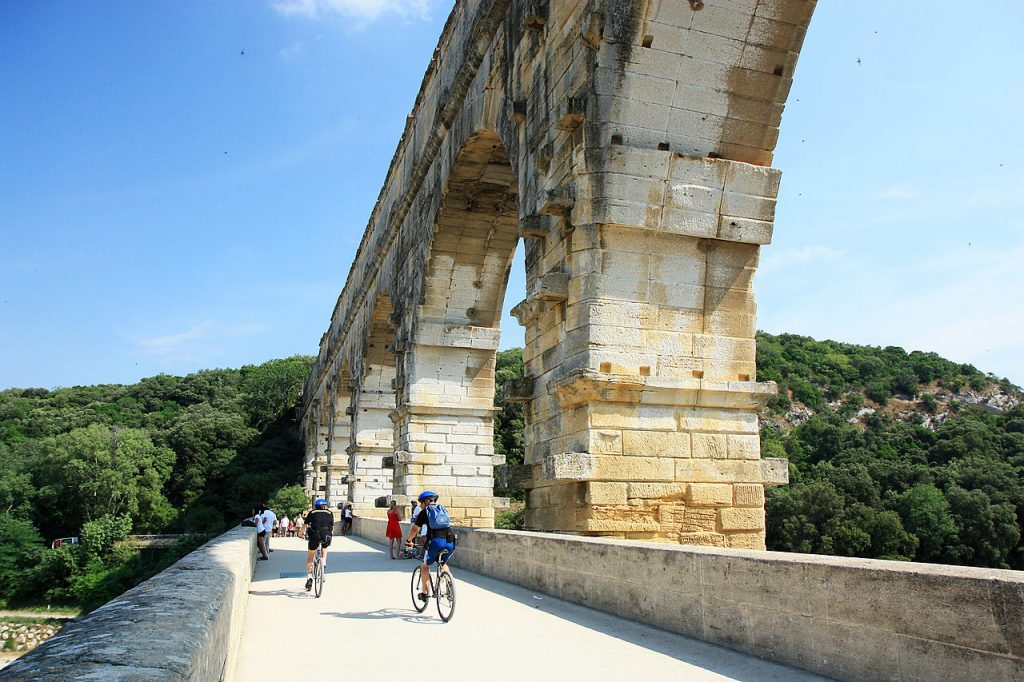
Completed in 60 CE, the Pont Du Gard was continuously used for over 500 years. Not only did it function as a regular aqueduct, but it also doubled as a bridge that allowed people and vehicles to cross the Gardon River. Its constant usage as a bridge has led to the preservation of the structure since the time of the Ancient Romans.
2. Aqueduct of Segovia – Segovia, Castile and León, Spain

Located in the heart of the historic center of the city, the Ancient Roman Aqueduct of Segovia is one of the best-preserved examples of Roman Architecture. The square surrounding the aqueduct is one of the most popular spots in Segovia, and the modern city has grown in harmony with the ancient structure.
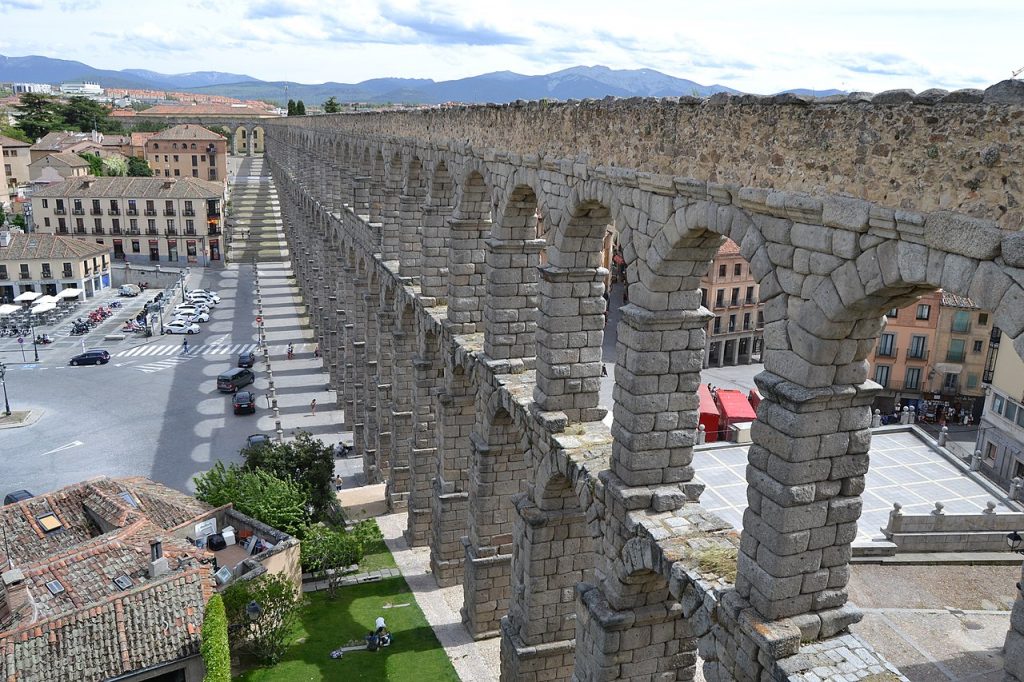
The aqueduct continued to function for more than 1,000 years, finally being decommissioned in the mid-19th century. Many of the city’s local population brag that the aqueduct could still work with a few minor repairs. Today, the city invests in keeping the aqueduct intact and sponsors constant restoration projects.
3. Les Ferreres Aqueduct – Tarragona, Catalonia, Spain

Les Ferreres Aqueduct was constructed during the reign of Augustus and supplied water to the city of Tarraco, modern-day Tarragona. The aqueduct rerouted water from the nearby Francoli River. Today, along with several other important Roman sites, such as the city’s amphitheater, the Ancient Roman Aqueduct of Tarragona is listed as a UNESCO World Heritage Site.

Les Ferreres Aqueduct is regarded as one of the best-preserved aqueducts from the Roman Empire. The water channel is particularly well preserved, and in certain locations, it still holds water during periods of heavy rain. Due to the steepness of the valley, the engineers had to build an aqueduct that was 89 feet (27 meters) tall at its highest point.
4. Aqua Claudia – Rome, Lazio, Italy

The Aqua Claudia is one of the 11 major aqueducts in Rome and is regarded by many as the city’s most impressive. The total length of the system was 43 miles (69 km), but most of that span is within an underground tunnel. The raised portion of the aqueduct was made with stone and a massive amount of Roman Concrete, which was maintained by the Romans for hundreds of years.
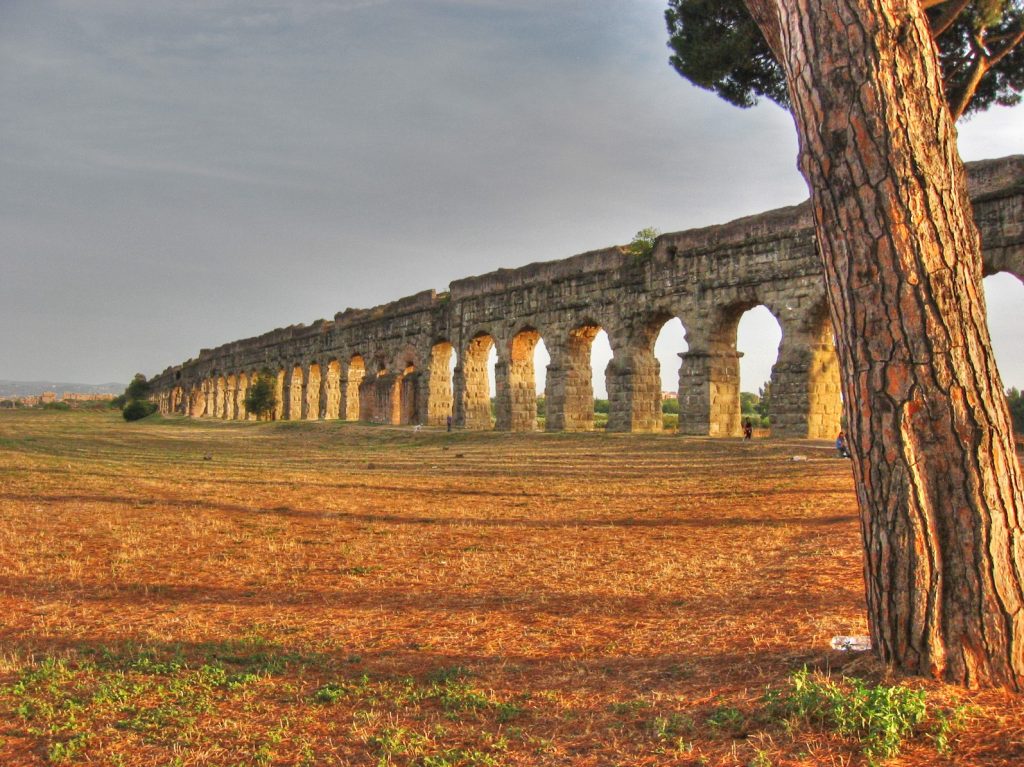
Different emperors extended the aqueduct over time, and eventually, the Aqua Claudia grew to handle a large portion of the entire city’s water needs. The aqueduct is slightly wider and thicker on average than many other Roman aqueducts, which is part of why it’s still so striking to this day. Today, the area around the aqueduct has been turned into the Parco degli Acquedotti, a large open space where people can relax in the shadows of many of Rome’s finest aqueducts.
5. Valens Aqueduct – Istanbul, Marmara, Turkey

Eventually, when the Roman Empire was split into two halves, Constantinople, now modern-day Istanbul, became the capital of the east. Valens, who ruled the Eastern Roman Empire in the late 4th century CE, completed the construction of a large aqueduct that brought in water from natural springs to the west. Today, the aqueduct stands precariously over Atatürk Boulevard in the bustling city of Istanbul.
Like Architecture of Cities? Sign up for our mailing list to get updates on our latest articles and other information related to Architectural History.
6. Aqueduct of Peña Cortada – Chelva, Valencia, Spain

The Aqueduct of Peña Cortada is located in a quiet mountain town known as Chelva in the area outside Valencia. The aqueduct is part of a large system of waterways that connected many major Roman settlements in the Roman Province of Hispania. After the fall of the empire, the aqueduct eventually stopped bringing water to the city. During the Dark Ages and parts of the Middle Ages, the aqueduct functioned as a bridge for pedestrians.
7. Aqueduct of Los Milagros – Mérida, Extremadura, Spain
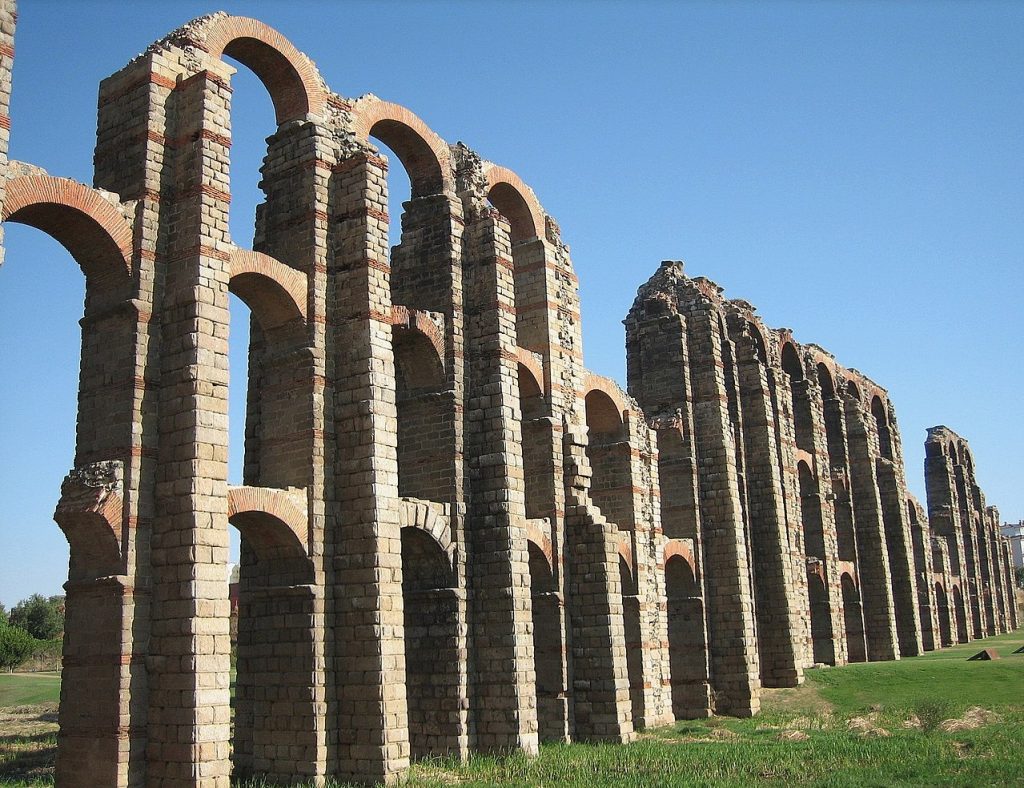
Emerita Augusta was one of the largest cities on the Iberian Peninsula during the time of the Roman Empire. The Romans constructed many monuments in the city, such as bridges, an amphitheater, and several temples. Roman engineers also built a large irrigation system, complete with an aqueduct that brought water to the city daily.
8. Aqueduct of Caesarea Maritima – Caesarea, Haifa, Israel

The ruins of Caesarea Maritima are some of the finest examples of Roman Architecture on the Mediterranean Sea. The city itself was at one time, the largest in the Roman Province of Judea, with over 125,000 residents. The Aqueduct of Caesarea Maritima brought water from the streams surrounding the mountains further inland.
9. Aqueduct of Diocletian – Split, Dalmatia, Croatia
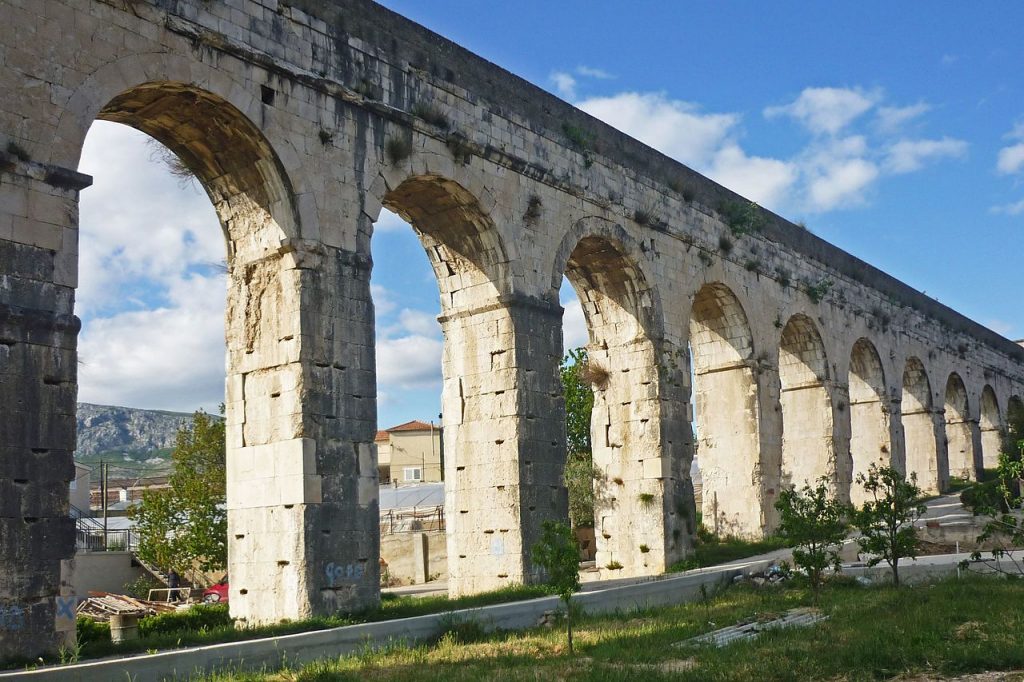
Diocletian was one of the few Roman Emperors to actually retire and give up the throne to his successor. He decided to build a grand and audacious palace near the town of Salona, in his homeland of Dalmatia in modern-day Croatia. The Palace of Diocletian grew to be the foundation for the modern city of Split. For hundreds of years, the city’s main source of water was the aqueduct, originally constructed solely for Diocletian’s retirement villa.
10. Aqueduct of the Gier – Lyon, Auvergne-Rhône-Alpes, France

The Aqueduct of the Gier was originally constructed to bring water to the city now called Lyon in France. Water was brought from the Gier, a small tributary of the Rhone River, all the way to the Roman provincial capital of Lugdunum. The slope of the aqueduct is a consistent 0.1% but although it’s nearly flat, there is a steady and gradual decline toward the city.
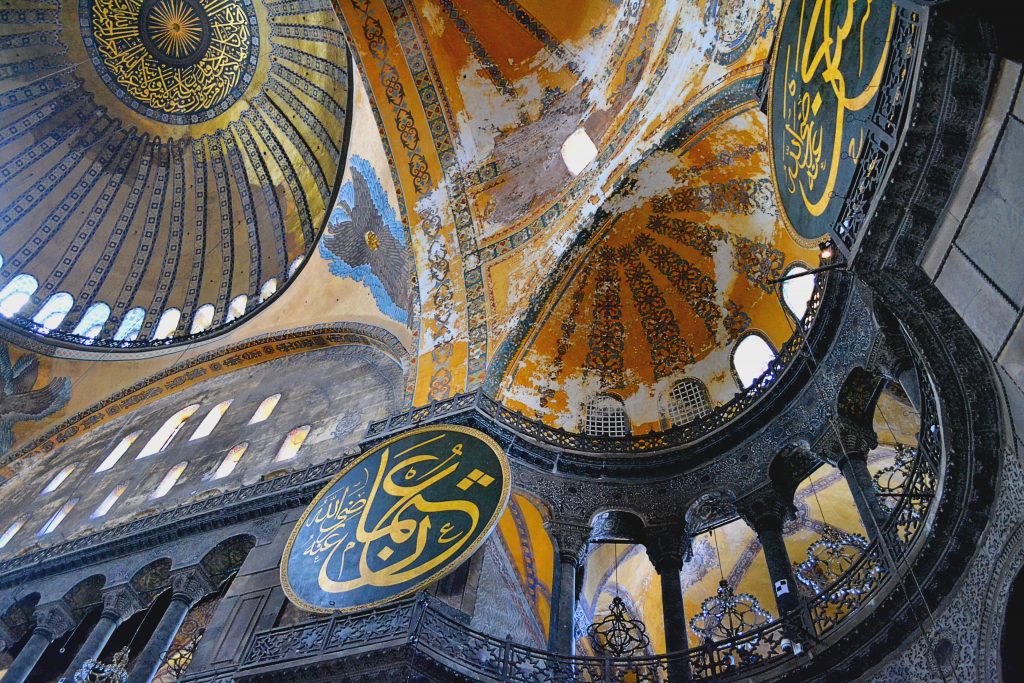
The Eastern Roman Empire, also known as the Byzantine Empire would live on long after the fall of the Western Roman Empire. Read our article, “Top 25 Examples of Byzantine Architecture“ to learn about the architecture of the Byzantines!
11. Aqueduct of Zaghouan – Tunis, Tunis Governorate, Tunisia
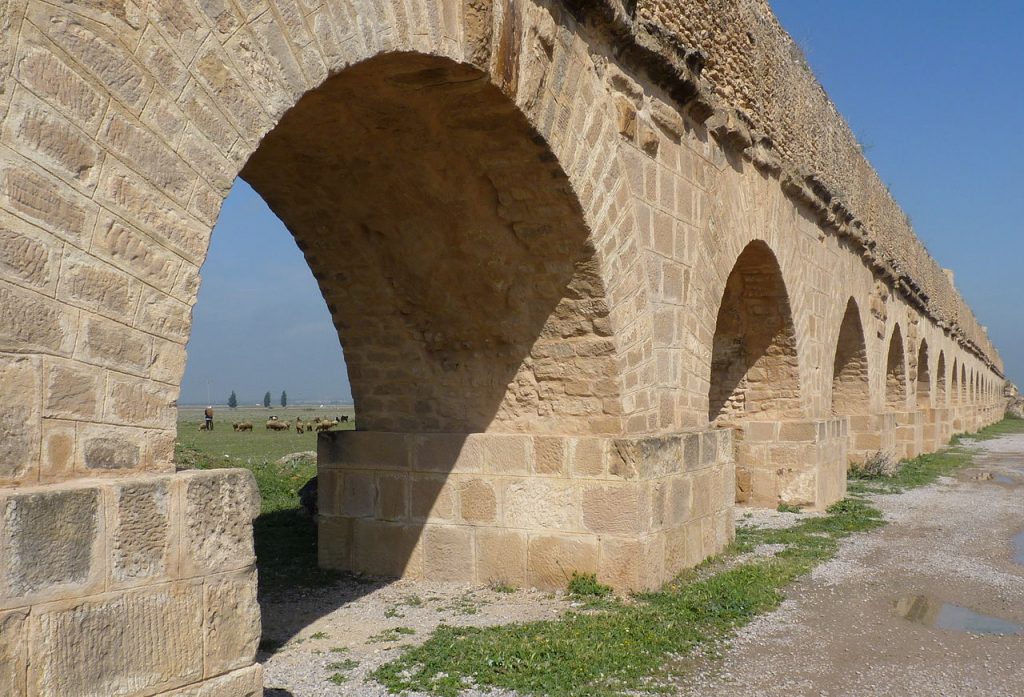
The only aqueduct on this list from the North African coast of the Roman Empire, is the Aqueduct of Zaghouan. The manmade waterway spans a distance of over 82 miles (132 km) making it one of the longest Ancient Roman Aqueducts ever built. It supplied water to the city of Carthage, one of the largest ports on the African coast.
12. Aqueduct of Luynes – Luynes, Centre-Val de Loire, France
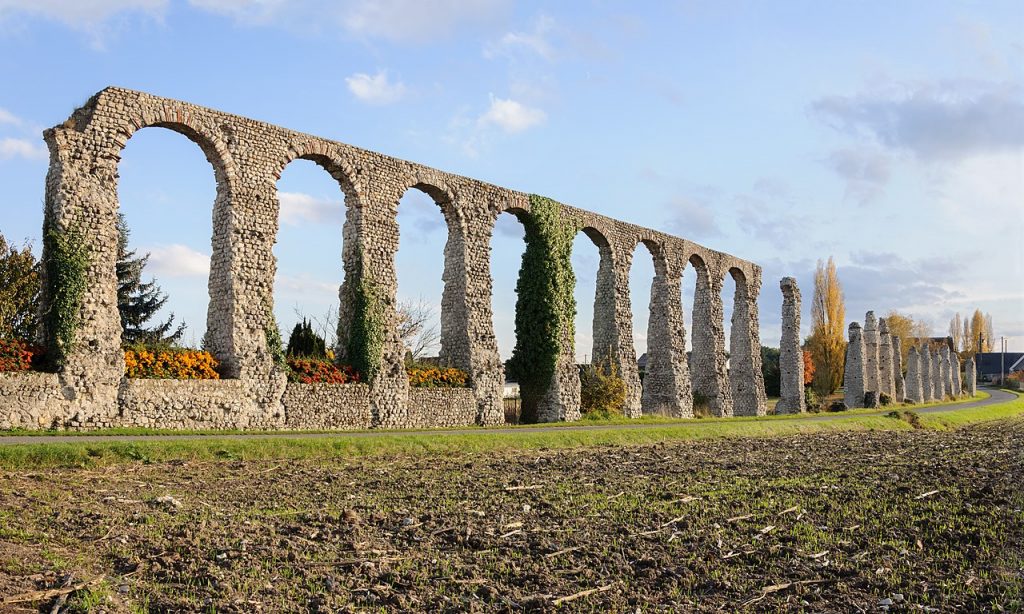
Despite the Aqueduct of Luynes having thin supports compared to many other Ancient Roman Aqueducts on this list, much of the structure has survived to today. The tall, narrow arches appear to gracefully traverse the landscape, showing how Roman Engineering could be aesthetically pleasing as well as practical.
13. Ponte d’Aël – Aymavilles, Aosta Valley, Italy
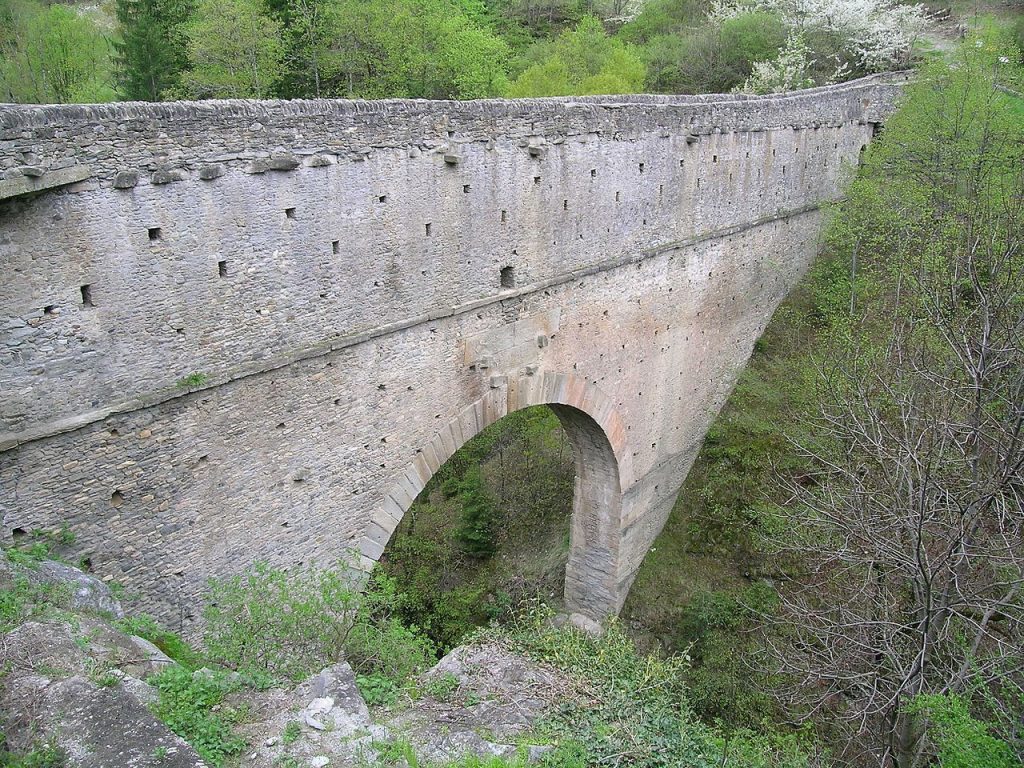
The Ponte d’Aël was built as part of the water system for the city of Augusta Praetoria. Today known as Aosta, the city was an important outpost in the Roman Empire, securing the foothills of the Alps at the northern edge of the Italian Peninsula. Today, Aosta is known for its well-preserved Roman ruins. It’s also the largest city in the Aosta Valley region, one of the smallest Autonomous Regions in all of Italy.
14. Metz Aqueduct – Metz, Granz Est, France

In the suburbs of the French city of Metz, stands an isolated remnant of an Ancient Roman Aqueduct. The giant pillars that support the arches are several feet thick and spaced far apart enough for a car to pass through. Today, although overshadowed by Metz’s medieval monuments, the city’s aqueduct remains a popular attraction.
15. Eugenius Aqueduct – Trabzon, Black Sea Region, Turkey
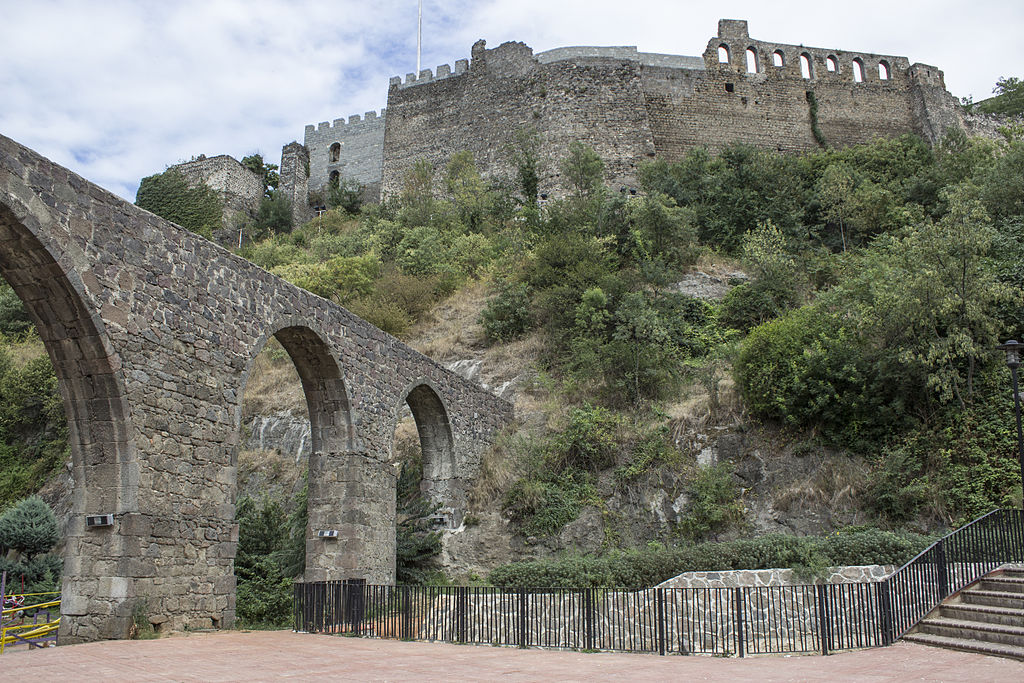
On the shores of the Black Sea in northern Anatolia lies the ancient city of Trebizond, now known as Trabzon. The city flourished in the times of the Roman Empire and then later the Byzantine Empire. Eventually, the city was taken by the Ottoman Empire after the fall of Constantinople, but the Eugenius Aqueduct managed to stay in relatively good condition.
16. Aqua Alexandrina – Rome, Lazio, Italy

Rome had an incredibly complex system of aqueducts that brought water to the Empire’s Capital. There were 11 major aqueducts in total, and the Aqua Alexandrina was the final major aqueduct built in the city. Completed in 226 CE, water ran through the Aqua Alexandrina for more than 500 years until the 8th Century.
17. Lesbos Aqueduct – Lesbos, North Aegean Region, Greece

Lesbos, an island in the northern Aegean Sea, was an important center within Ancient Greece. Eventually, as the Romans conquered the area, Lesbos again prospered as a prominent port in the Roman Empire. The Ancient Roman Aqueduct at Lesbos is just a shadow of its former self, but it still signifies the lasting control the Romans had on the island.
18. Caños de Carmona – Seville, Andalusia, Spain

Sparsely located throughout the modern streets of Seville, are the remnants of the Caños de Carmona. The aqueduct once spanned far outside the city of Seville, bringing in water from miles away. Eventually, in the 19th century, the vast majority of the aqueduct was demolished by city officials. But a few fragments were salvaged and restored, and they are monuments within the modern cityscape.
19. Aqueduct of Aspendos – Serik, Mediterranean Region, Turkey
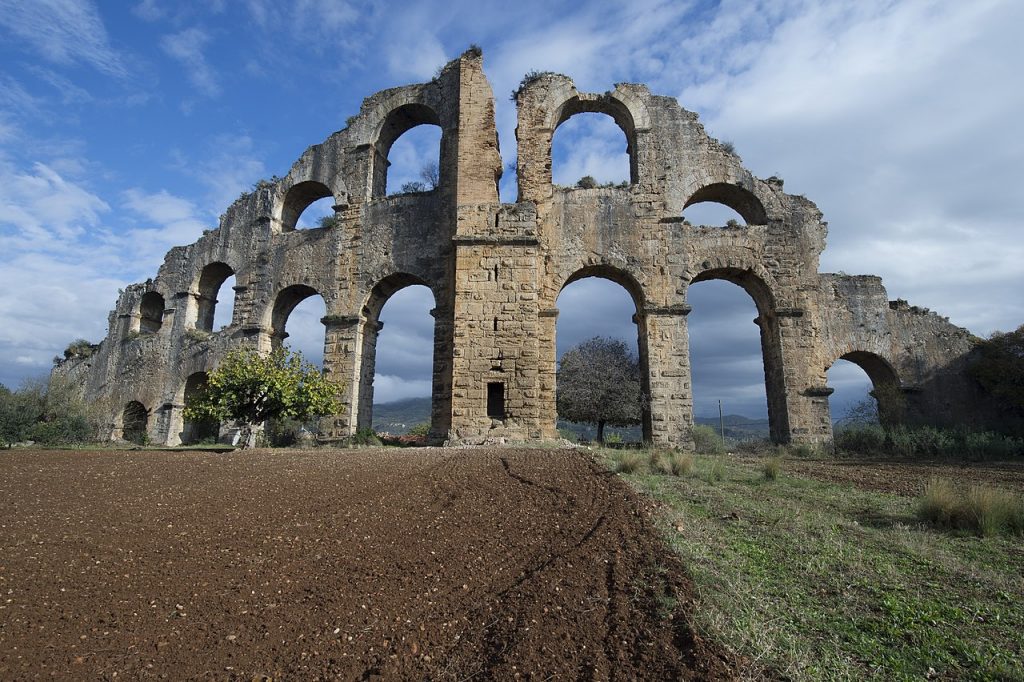
Established as a Greek colony in Anatolia, Aspendos grew to be a large city during the Roman Empire. The city contains one of the most well-preserved theaters from the ancient world. Although mostly a ruin, the towering Aqueduct of Aspendos showcases how powerful and wealthy the city was in those times.
20. Aquincum Aqueduct – Budapest, Central Hungary, Hungary

Aquincum was an Ancient Roman city that was one of the Empire’s largest outposts on the Danube River. Today, the ruins of Aquincum can be found in the Óbuda neighborhood of modern-day Budapest. The remnants of the aqueduct, as well as building foundations, and a Forum, all make up a large open-air museum within Budapest.
Roman Aqueducts after the fall of the Roman Empire
After the Roman Empire fractured and eventually fell apart, many aqueducts, as well as other important buildings, fell into disrepair. Stone and bricks from Roman monuments were often repurposed for other buildings. But despite all of this, some aqueducts managed to survive for centuries, being steadily maintained by local populations.
Modern Versions of Roman Aqueducts
Many different governments have followed in the footsteps of the Romans, constructing their own aqueducts to help manage freshwater. The Aqueduct of Kavala was constructed by the Ottoman Empire in the 16th century, directly over the foundation of a former Roman Aqueduct.

Photo by Nikolai Karaneschev from Wikimedia commons
The efficiency and simplicity of the Ancient Roman Aqueduct have also been duplicated in other forms, such as bridges and docks. Glenfinnan Viaduct, located in the Scottish Highlands, is one of the most well-known railway bridges on earth, and it is modeled directly after an aqueduct.

Photo by Nicolas Benutzer from Wikimedia Commons
Legacy of Roman Aqueducts
Aqueducts weren’t just important to the Romans because they provided freshwater; they also showed the wealth and power of their empire. The Romans were constantly building bigger and better monuments; their amphitheaters, temples, Triumphal Arches, Forums, fortifications, and even their aqueducts were all designed to display just how great and innovative they were.
To this day, remnants of Roman aqueducts can be found all over Europe, North Africa, and the Middle East. Although this list only provides 20 examples, there are traces of aqueducts all over the lands of the former Roman Empire, showing just how vital they were to the Roman way of life.

- About the Author
- Rob Carney, the founder and lead writer for Architecture of Cities has been studying the history of architecture for over 15 years.
- He is an avid traveler and photographer, and he is passionate about buildings and building history.
- Rob has a B.S. and a Master’s degree in Architecture and has worked as an architect and engineer in the Boston area for 10 years.
Like Architecture of Cities? Sign up for our mailing list to get updates on our latest articles and other information related to Architectural History.
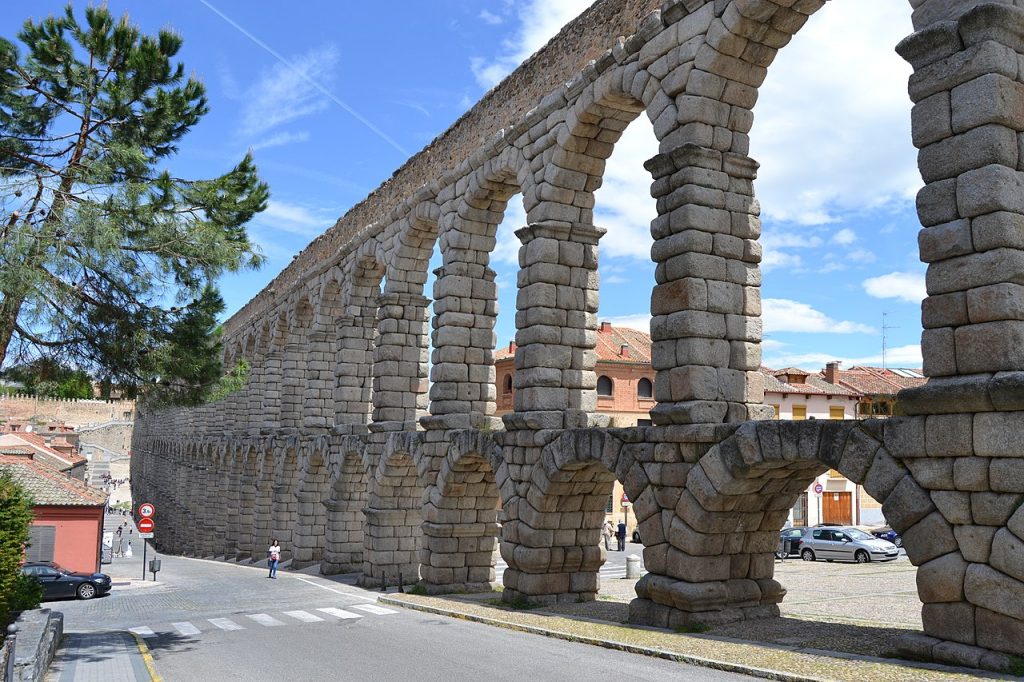
Photo by Emilio J. Rodríguez Posada from Wikimedia Commons


